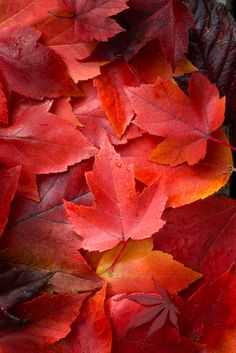Why Do Leaves Change Color In The Fall?
By: Lauren M. Liff for Dabah Landscape Designs
As we inch closer to the fall and the hot summer heat turns into a cool autumn breeze, all eyes gaze upon the trees in anticipation for their bright seasonal color show. When the bright blossom colors of summer begin to fade and plants begin their transition into dormancy, the trees push out one last seasonal spectacular burst of color before their leaves drop. There’s no question that people everywhere admire the fall for this beautiful transformation, but why and how does it happen? The science behind the colorful changing leaves of fall is actually quite remarkable.
During the growing season, the leaves act essentially as a small factory; this is where the nutrients essential to a tree’s growth are manufactured. The cells within each leave contain chlorophyll, which gives the leaf its green color. Chlorophyll absorbs the energy from the sunlight that is used to transform carbon dioxide and water into carbohydrates like sugars and starch. Aside from the green pigment in the foliage, there are also yellow to orange pigments (carotenes and xanthophyll pigments) that are overpowered by the green coloring during the growing season. These pigments, for example, are what make carrots orange.
When fall arrives it brings with it shorter days and cooler temperatures causing the leaves to stop making food for the trees as they prepare for dormancy. As a result, the chlorophyll begins to break down and the amount of green color deteriorates leaving the yellow to orange pigments free to shine. But not all trees are coated with the same dazzling colored foliage and that is because there is a miniature art class that’s taking place within the leaves! As the chlorophyll breaks down, red anthocyanin pigments are developed which create the beautiful reds and purples. The pigments mix and mash to create that brilliant array of autumn tones. Some mixtures create the red and purple colors seen on dogwoods and sumacs while other mixtures cause the sugar maple to adorn that beautiful orange. Other trees will show mostly yellow leaves while still others, like oak trees, will show mostly browns. This varying color pallet is all due to the pigments mixing together in different amounts.
Weather also can affect the intensity of the fall foliage colors. Factors like temperature, light and water supply can impact the degree and duration of the fall color show. Low temperatures that are above freezing will aid in anthocyanin formation, creating the bright reds more commonly seen in maples. However this bright red color could be weakened by an early frost. A significant number of rainy or overcast days could increase the brightness of the leaf color. The best time to observe this incredibly beautiful transformation is on a clear, dry and cool (not freezing) autumn day – make sure to seize the moment because before you know it, those colors will fade as well with a chilly breeze whispering, “winter is coming”.




